Sequencing is the practice of completing work in the optimal order. An optimal order is one that helps us ship work quickly, while balancing urgency and rigor.
Sequencing is most effective when it is Engineering-driven. While the Product Managers understand the value of a feature, Engineers understand the cost. Engineers understand which parts of the codebase are fraught with tech debt and which areas are built to scale.
The following is our framework for sequencing. This sequencing approach helps us consistently deliver more value, faster — and it's become a core part of how we build.
The PRD
A Product Requirement Document (PRD) includes a list of user stories that the Product Manager (PM) wants solved.
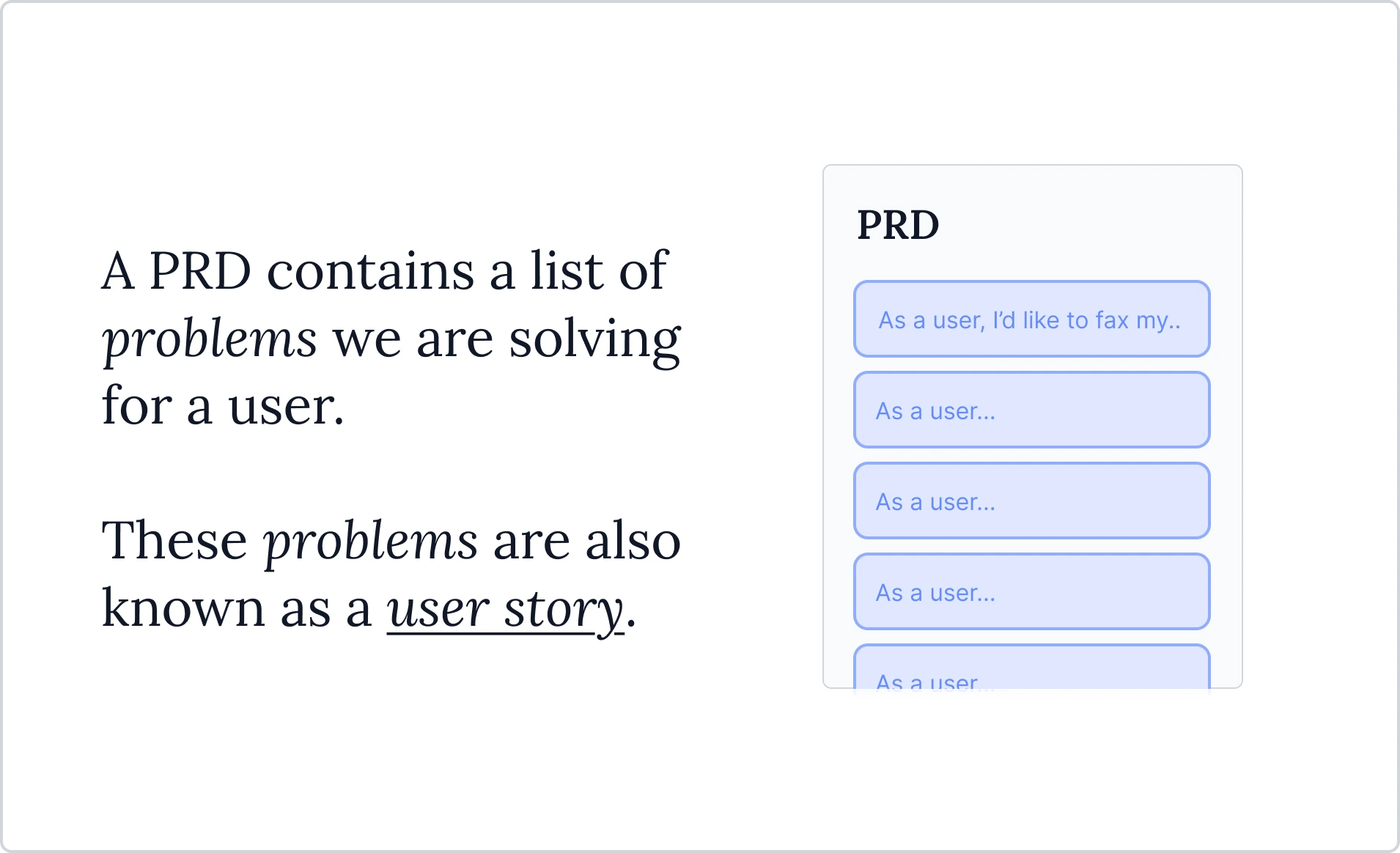
The Product Manager's role is to clarify the problem and value. In this example, value is indicated by length.
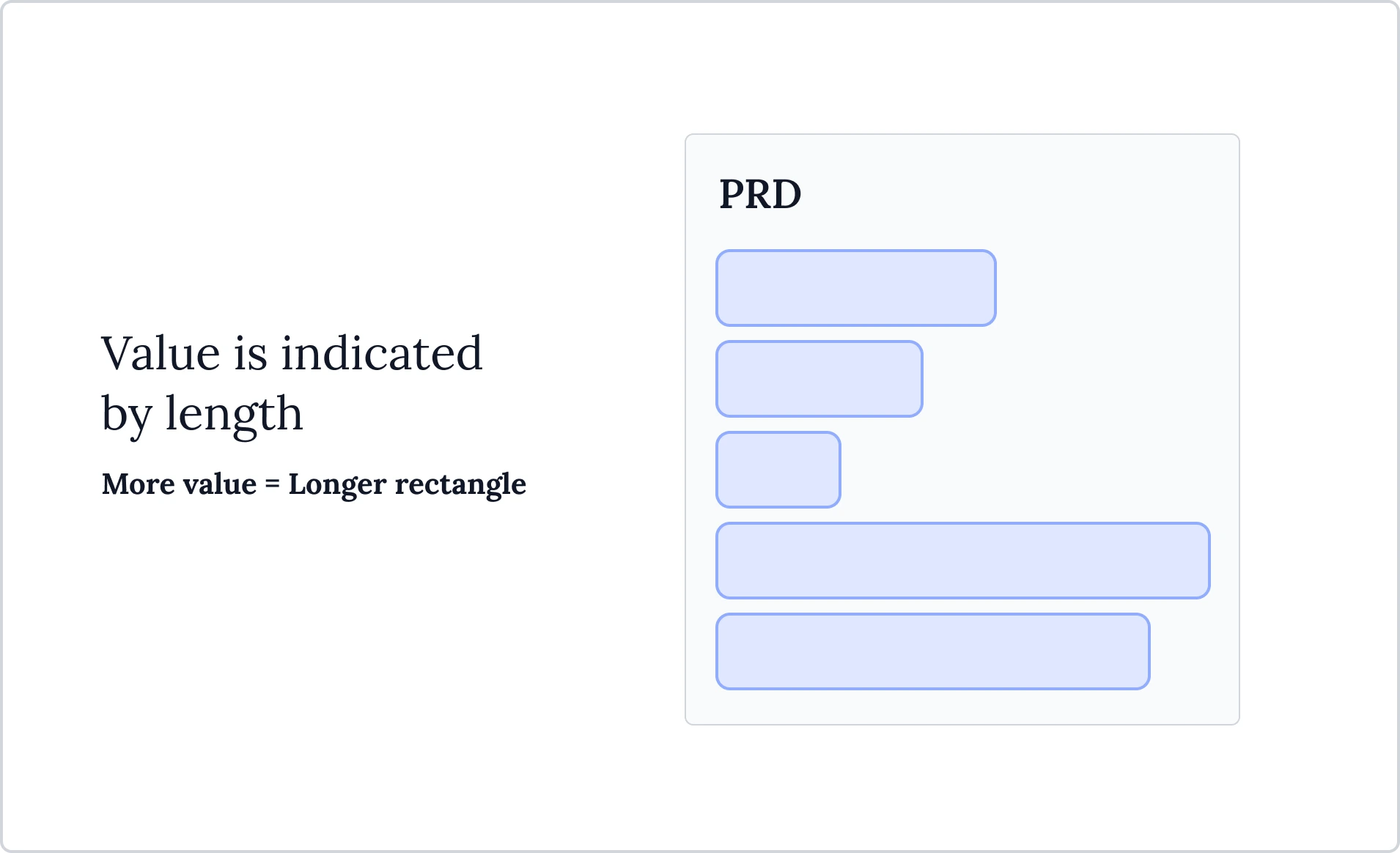
An engineer's goal is to build everything needed to solve the PM's problems.
Engineers should own sequencing1. This is because while PMs understand the value, engineers understand the cost, dependencies, technical debt, etc.
Approaches to sequencing
Approach #1
The most naive approach an engineer can take is sequencing in the order the PM outlined in the PRD:
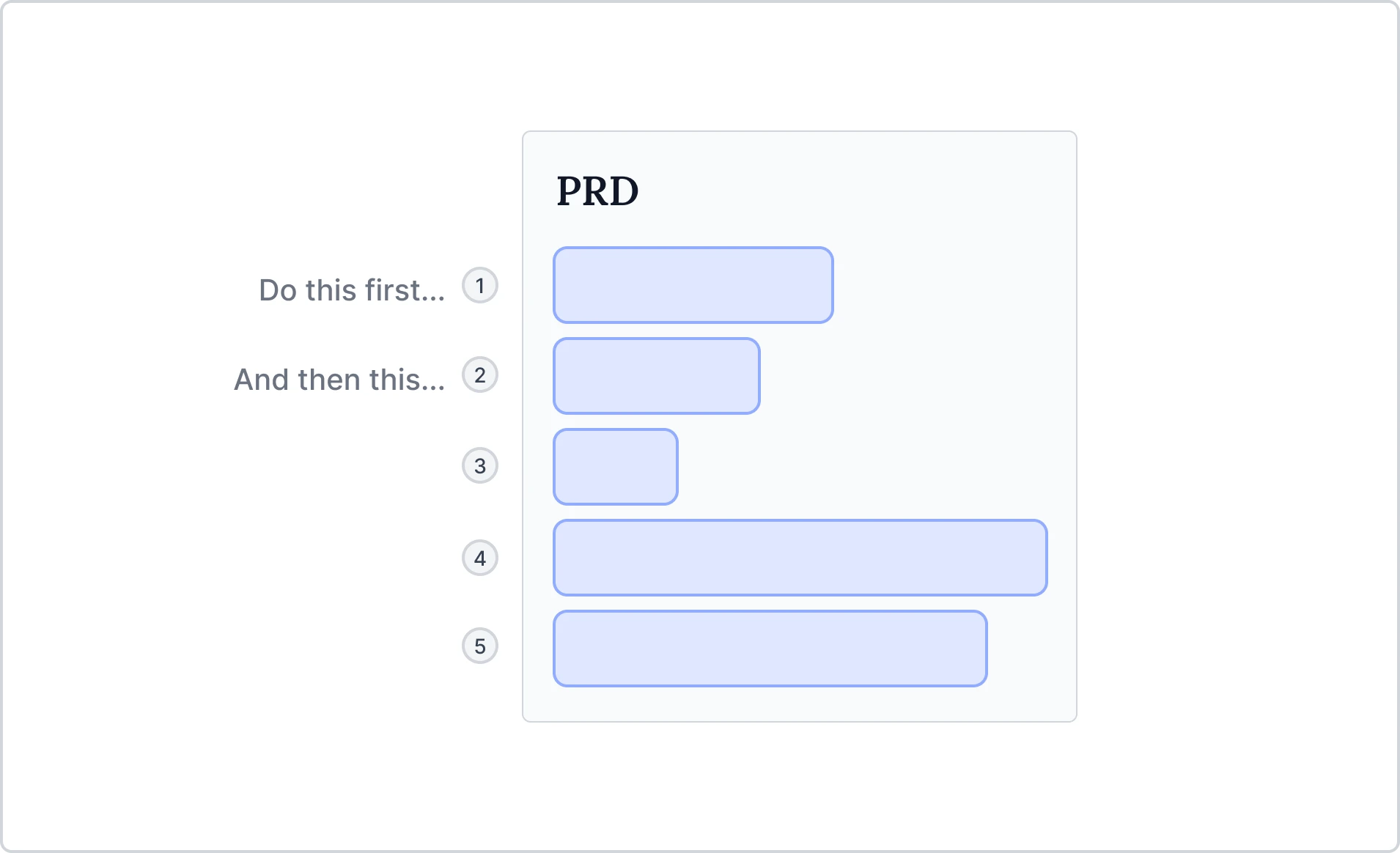
Approach #2: Value
A slightly better approach is to sequence by value:
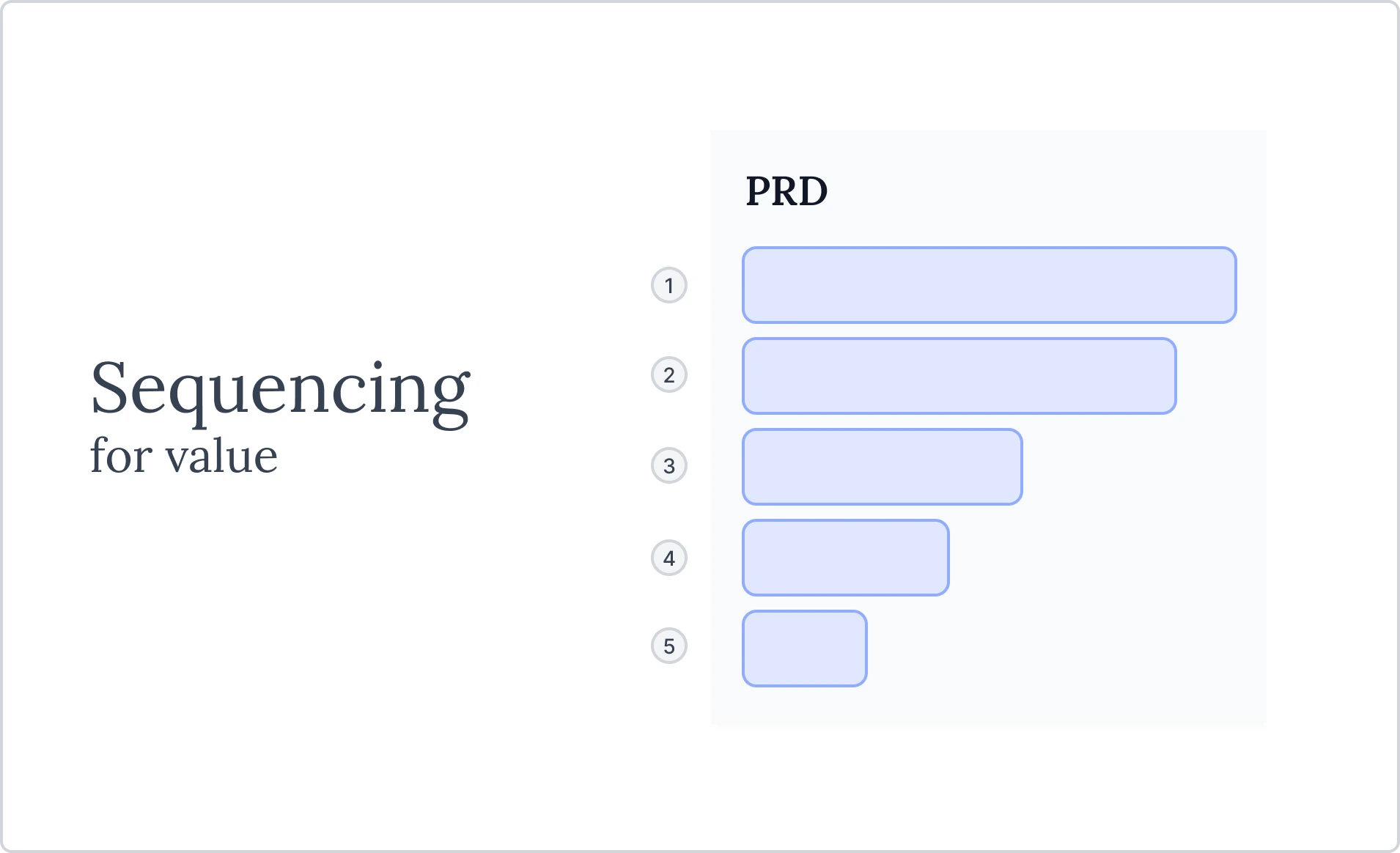
This comes with challenges, however. The implementation cost is not accounted for.
Approach #3: Value and cost
A better option is to understand the (approximate) cost of each user story. How long will completing each task take?
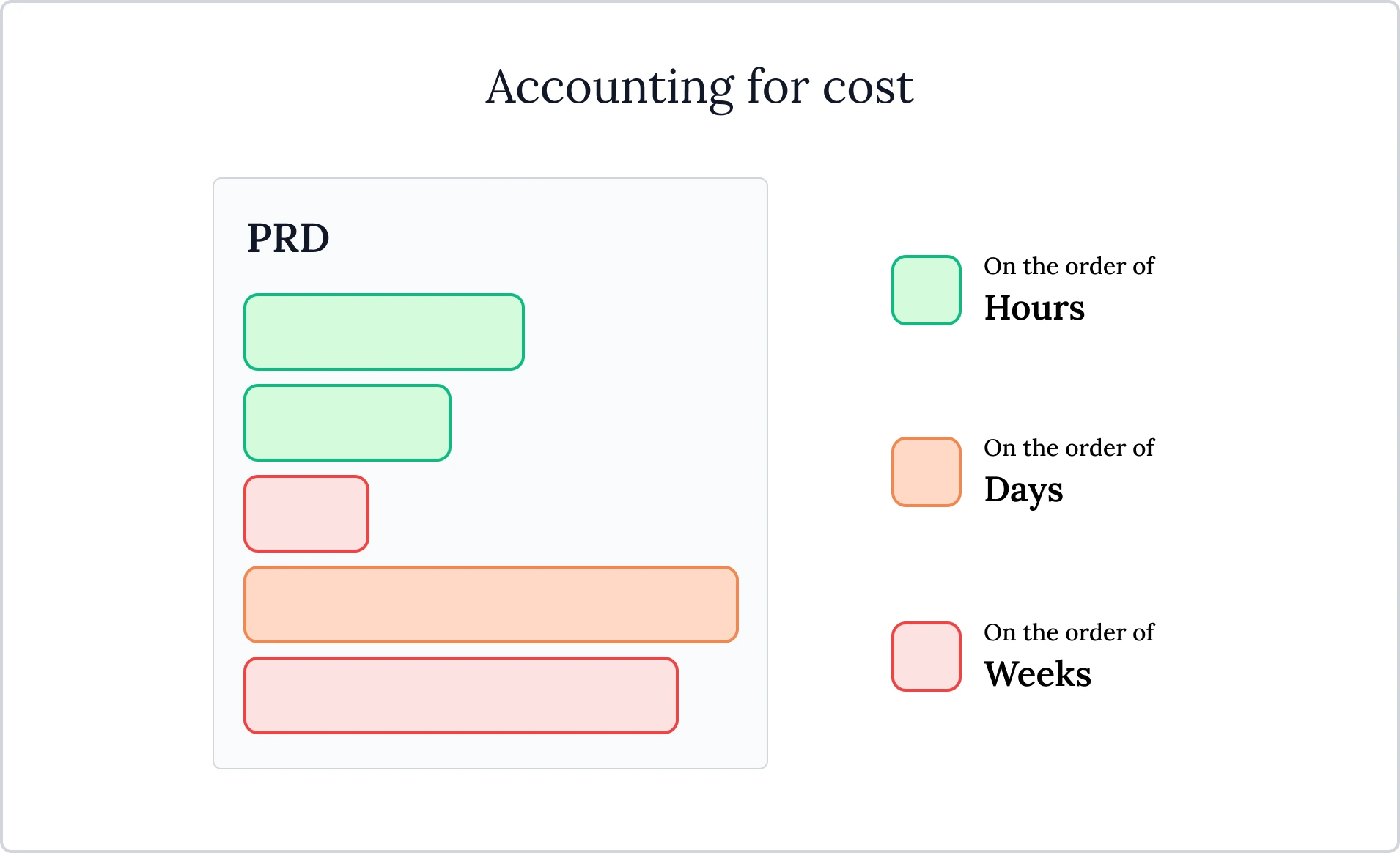
After assigning estimates, you can sequence for value and cost…
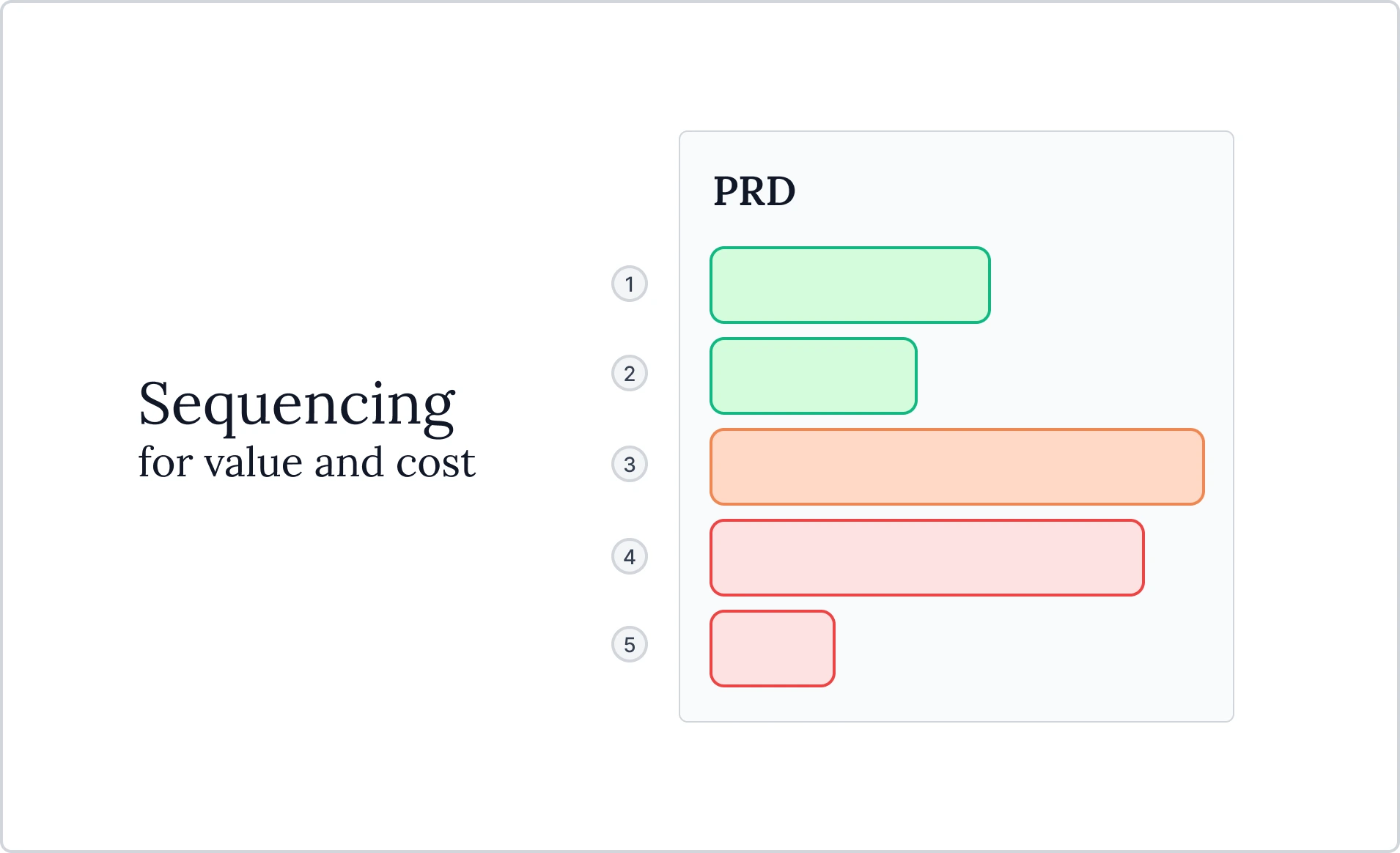
Approach #4: Value, cost, and reframing
Sometimes, you can turn a task from "red" to "green" by reframing the solution. Reframing only can happen after you understand the intention behind the task.
Explaining the cost and reframing solutions helps Blueberry solve more user problems in less time.
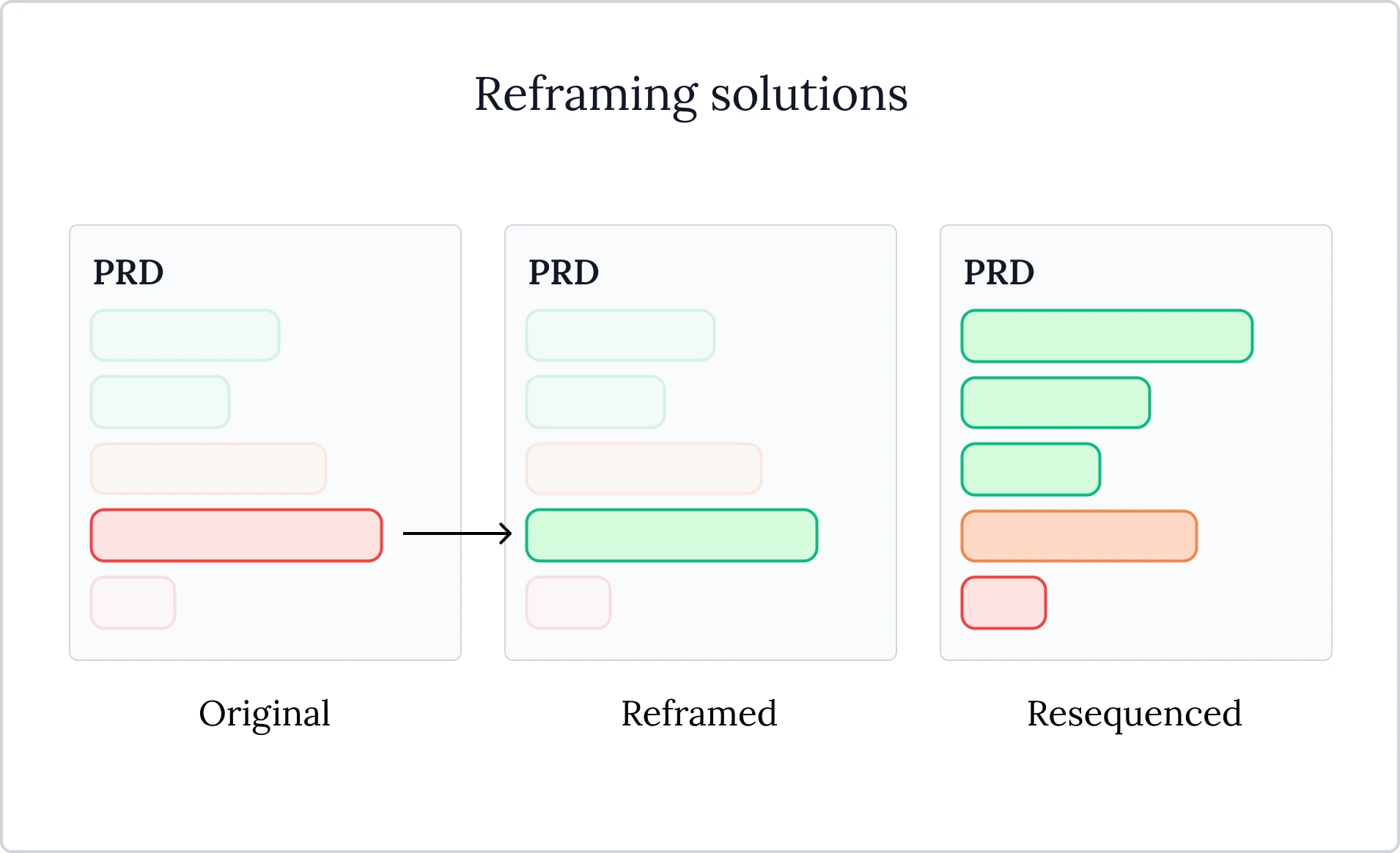
Sequencing helps to communicate costs to PMs and allows us to ship more value to our customers.
The value of sequencing
Each new change (feature or bug fix) has the potential to increase business value.
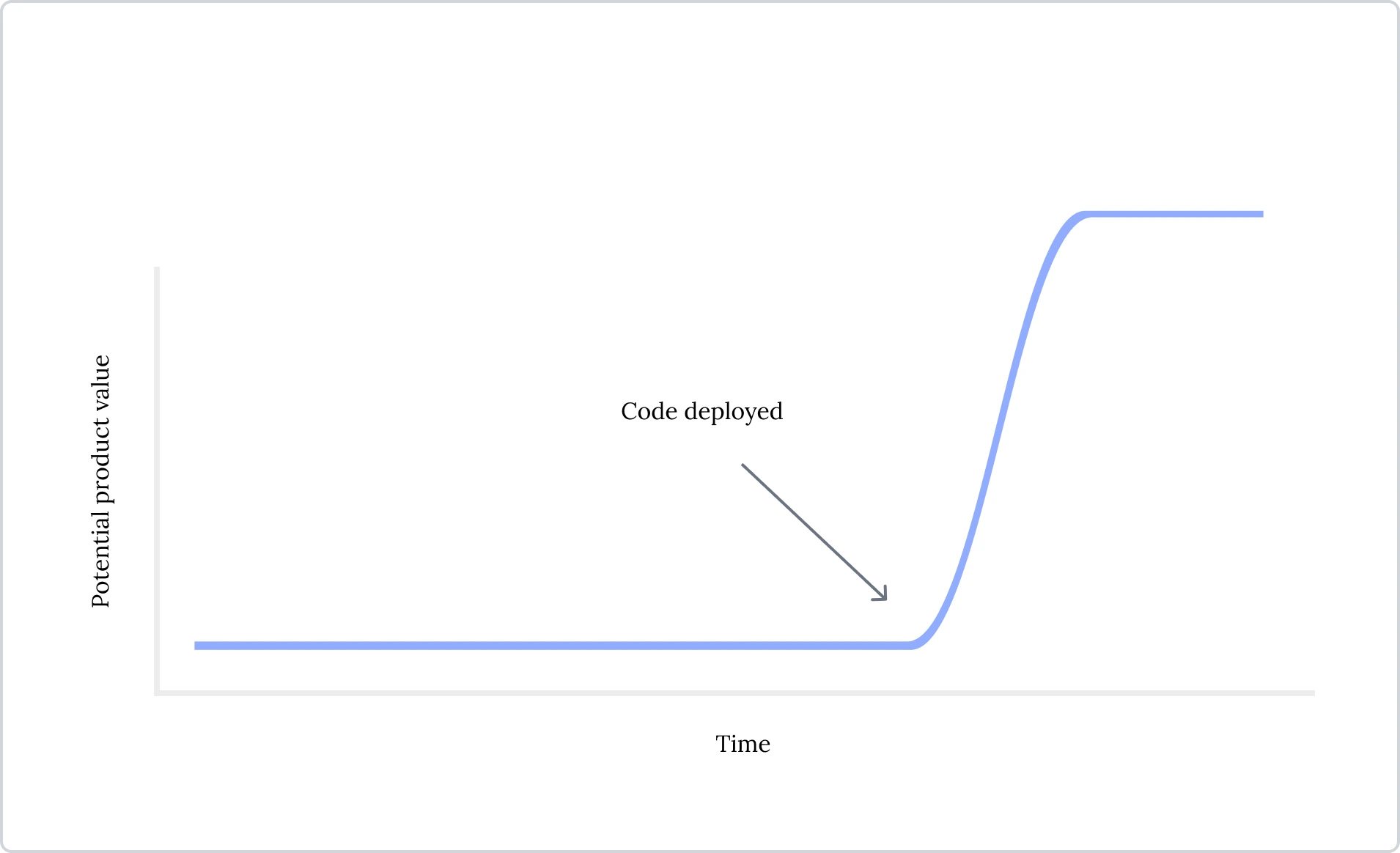
Let's say this was over a quarter…
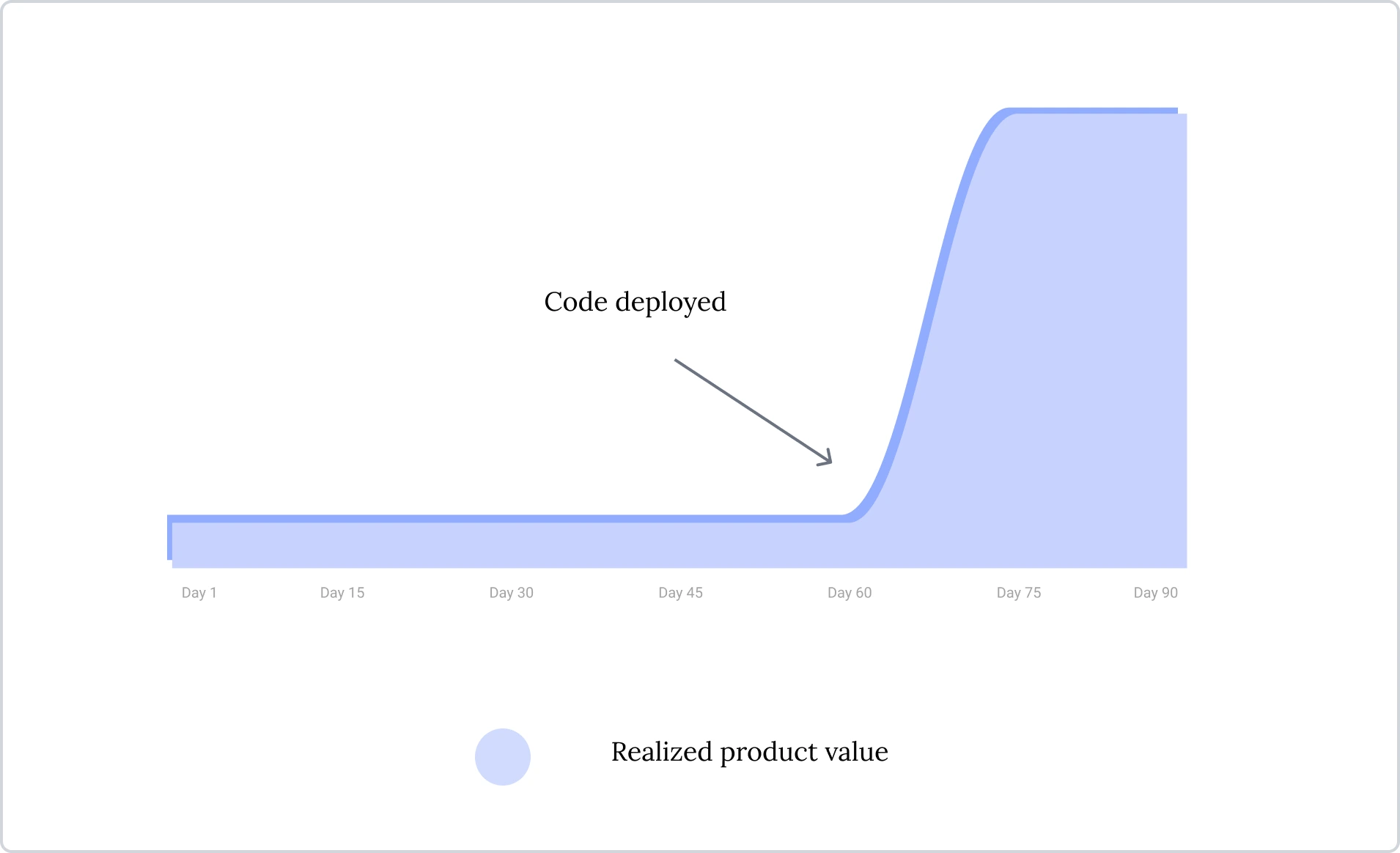
If we shipped the entire PRD on day 75, there would be 15 days in that quarter when we realized the value of that PRD.
If we instead deferred the "hard" part of the PRD, and shipped the low-hanging fruit first, our realized value would look like…
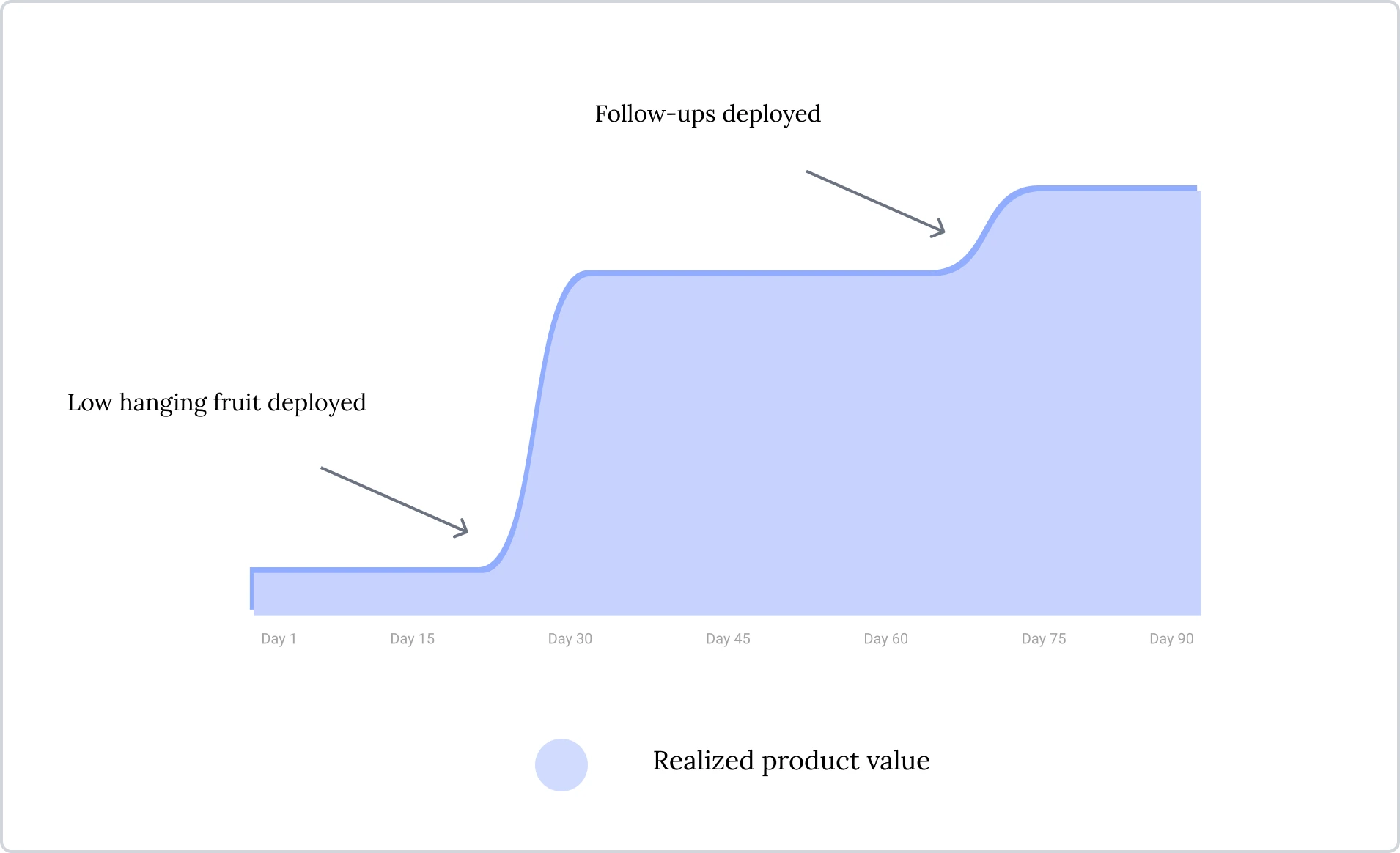
A difference in sequencing can lead to more value captured by the business:
We're hiring
If you're interested in joining a team where Engineering co-develops the product, consider joining us.
-
Sometimes sequencing will have inherent product constraints: we can't remove this button until that button is added. These constraints must be respected. ↩